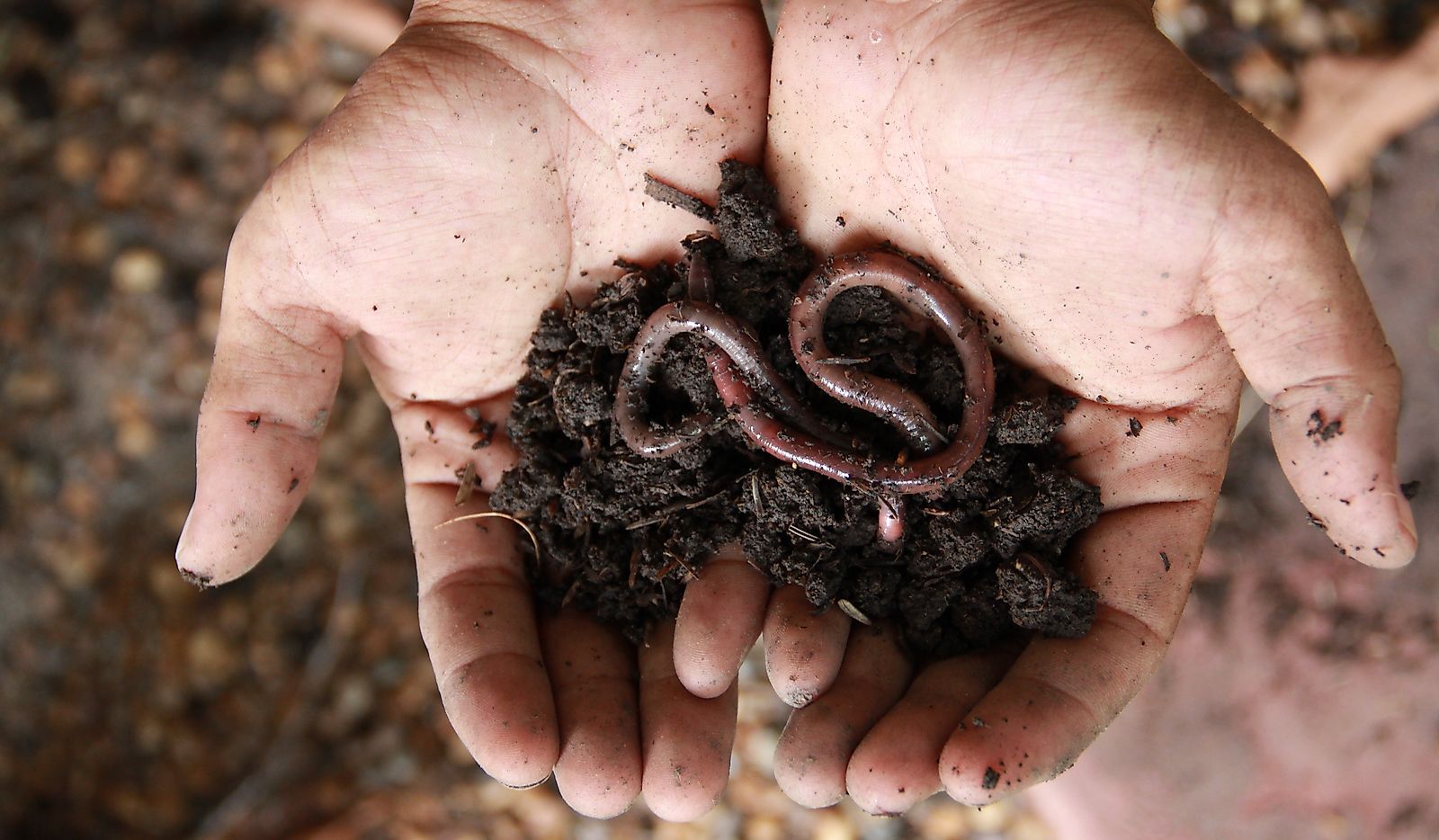Why are Earthworms Important for the Soil?

- They recycle nutrients
Worms are hungry little creatures. They have the capacity to eat their own body weight in food every day!
Amongst other things, their diet consists of:
- dead plants,
- fallen leaves,
- fungi, bacteria and
- even dead animals.
When they eat, worms break down and recycle this organic matter within the soil. This naturally fertilizes the earth and packs it with vital nutrients.
The little mounds you sometimes see on top of the soil are called worm castings. These are, essentially, worm poo! They are the end product of this recycling process.
Their casts can contain 5 times more nitrogen, 7 times more phosphorus, and 1000 times more beneficial bacteria than the original soil that helps plants grow.
- They improve soil structure
Earthworms loosen, mix and oxygenate the soil as they burrow channels.
They improve the soil's structure. They leave space for water to be drained away from the surface and stored in the soil.
Research has shown that soils without earthworms can be 90 percent less effective at soaking up water. This means more water run-off, which can lead to erosion and flooding.
Worms don’t like living in very poor-quality soil. To survive, worms need moist soils that contain enough organic matter for them to feed on. So, by counting the number of worms in soil, farmers can get a pretty good idea of their soil’s health.
- They repair damaged soil
Worms can also help clean up contaminated land by enhancing ‘bioremediation’. This is when micro-organisms break down environmental pollutants and turn them into non-toxic molecules.
By wriggling and burrowing, worms' movements spread these micro-organisms around the soil.
So, while they have a reputation for being dirty – they clean up fairly well!
- They provide a food source for other important species
As important as they are alive, worms are also very important in the food chain.
They provide an important protein-rich source of food for other species like birds, hedgehogs and frogs.
Our underground allies are pretty amazing. Protecting these animals is crucially important to help protect the health and balance of nutrients in the soil.
How to Tell if Your Soil is Earth Worm Healthy
Count Your Earthworms — the best time to count earthworm populations is early in the spring, or after the soil has wetted up in the autumn.
Counting earthworms when it is warm and after rain often provides the best population estimates. Avoid taking samples when the soil is very dry. Soil should have been wet for a few days prior to sampling.
When assessing earthworm numbers, it is important to take more than one sample from within each field; 10 samples per field is ideal. Comparisons between cultivated parts of the field and margins can be useful.
Step-by-step guide:
- Dig out a soil pit (20cm x 20cm x 20cm) and place soil on mat
- Hand-sort the soil, placing each whole earthworm into the pot
- Count and record the total number of earthworms
- Separate earthworms into adults and juveniles
- Return juveniles to the soil pit
- Count and record the number of each type of adult earthworm
- Return earthworms to the soil pit and backfill with soil
- Repeat steps 1–7, until 10 soil pits per field have been assessed
Resources:
Soil Association, Scotland
Environment Go
AHDB Library



